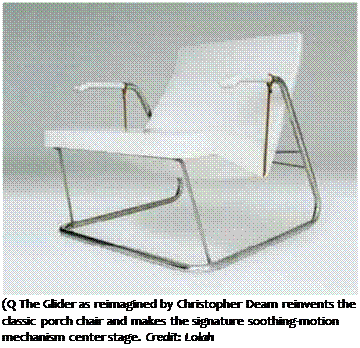
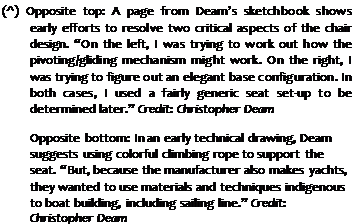
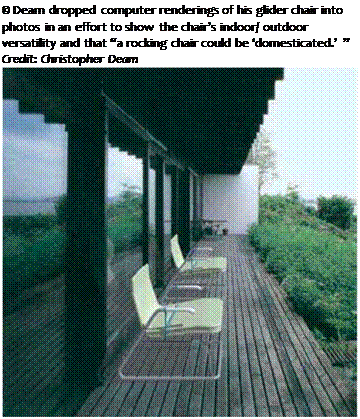 What brought Deam to that particular moment was his wife’s pregnancy with twins, which necessitated “the requisite pilgrimage to the baby furniture store.” Deam found it intensely intriguing that such a lovely and comforting movement came in such an ugly package. “What I didn’t like was that the way the chair worked was not evident,” Deam notes. “They even put skirts around the bottom of the chair to hide the mechanism. So I wanted to do a beautiful, modern version of a glider because I felt there had to be a market for people like myself that were looking for a pleasant rocking chair in a modern idiom. The second objective was that I felt hiding the way it worked was a disservice. So I wanted to, in the design, give evidence of how the gliding was accomplished.”
What brought Deam to that particular moment was his wife’s pregnancy with twins, which necessitated “the requisite pilgrimage to the baby furniture store.” Deam found it intensely intriguing that such a lovely and comforting movement came in such an ugly package. “What I didn’t like was that the way the chair worked was not evident,” Deam notes. “They even put skirts around the bottom of the chair to hide the mechanism. So I wanted to do a beautiful, modern version of a glider because I felt there had to be a market for people like myself that were looking for a pleasant rocking chair in a modern idiom. The second objective was that I felt hiding the way it worked was a disservice. So I wanted to, in the design, give evidence of how the gliding was accomplished.”
Deam first did a little research into both the mechanism itself and the history of the glider as an American icon. “On the traditional seats, the big problem was that it’s a very clumsy, complicated mechanism that isn’t integrated into the structure of the chair,” he discovered. “There is a base, a seat, and a linkage that connects the two, but it doesn’t really contribute to the overall form of the chair. I felt the linkage should be the form, should give the chair its identity.” Deam also found out that gliders were created as an interior version of the porch rocker. This peculiarly American invention was made by people who simply nailed curved pieces of wood to the bottom of a chair and put the contraption where they could enjoy the soothing motion as they watched the world go by. “People loved the movement,” according to Deam, “and wanted to domesticate it. But having a rocking chair indoors was considered gauche, so they started experimenting with a chair that would sit on the floor and not crush the cat’s tail. And so, the glider was born.”
In order to create his mechanism-evident rocker, Deam could not simply expose what was hidden on traditional gliders. “We had to reinvent the mechanism quite radically,” he says. “Atypical glider chair works on a trapezoidal linkage. Imagine a trapezoid, and each corner is a pivot, and when you move the top or bottom you get the gliding movement. We ended up rearranging that geometry, slicing it in half and rotating it.” Deam makes it sound simple, but he quickly points out that it took many experiments to get the motion right. “We started by making trapezoidal models to study the linkage and the movement. They didn’t look like chairs, but were made of paper clips and foam core. It took a lot of experimentation to get a linkage that would appropriately determine the form of the chair. Eighty percent of our efforts were spent on figuring out a linkage configuration that we liked.”
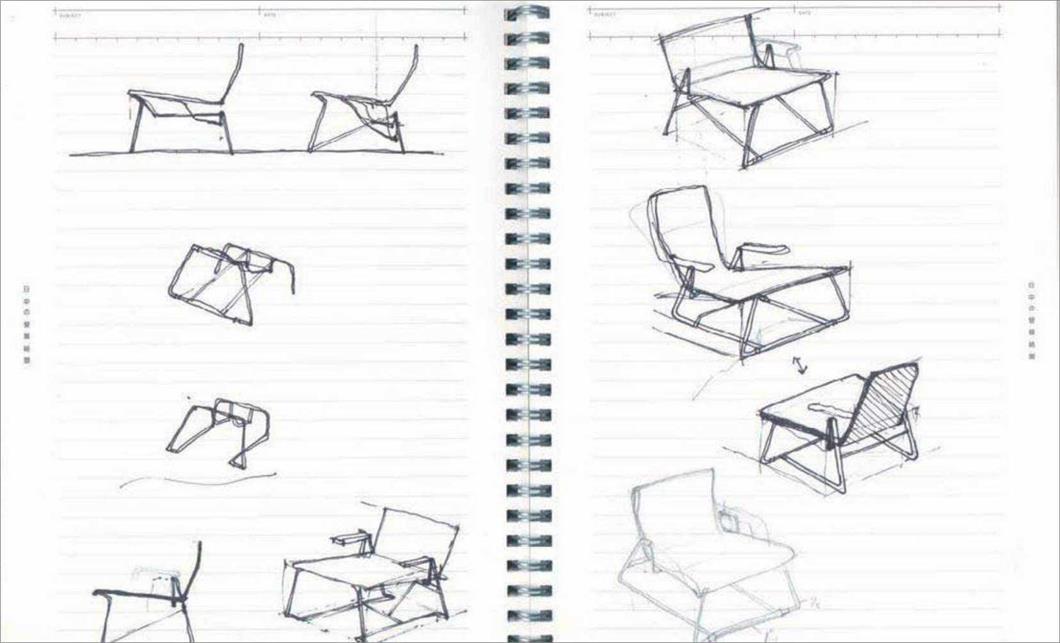
|
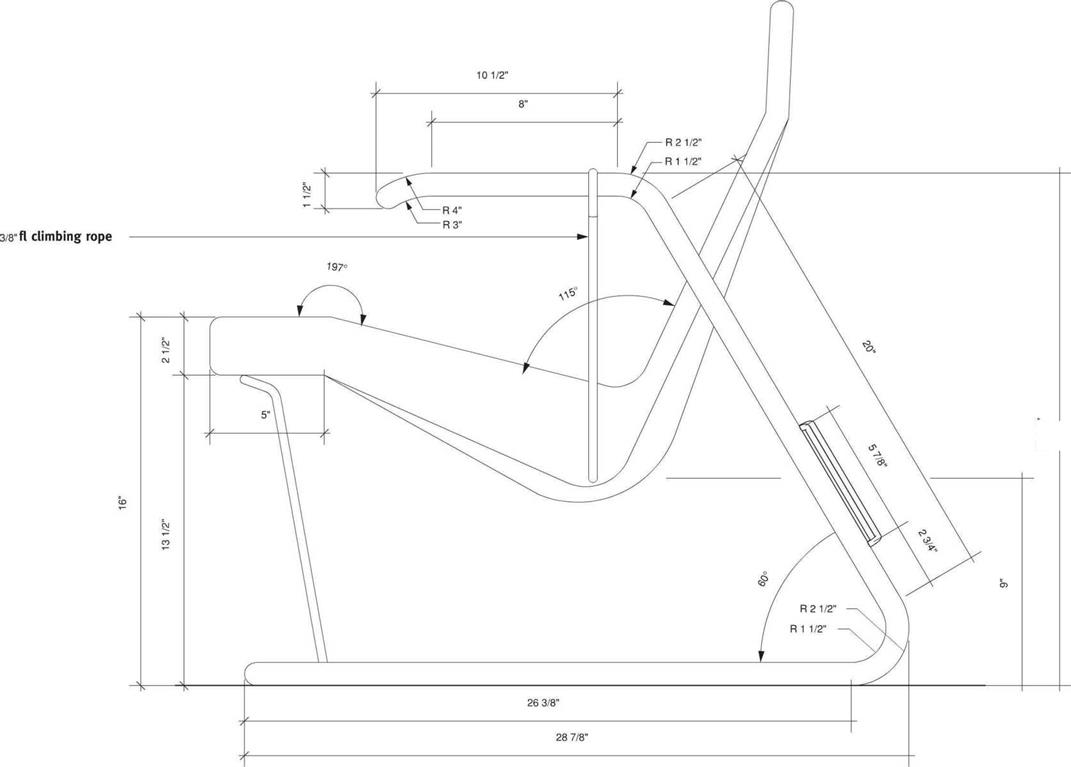
![]()
The next step was to find a manufacturer. He showed some of his designs to friends in Milan who. . scoffed at it. Europeans would never have a rocking chair in the home. It is distinctly American, and it became immediately apparent that I needed a North American manufacturer.”
What he found instead was a Canadian luxury yacht builder. “They wanted to get into the furniture business to utilize all their unique manufacturing techniques,” Deam says. “Fiberglass, stainless steel tube bending, and high-end wood work. These started informing the visual language of the chair. I wanted to show their strengths and superior craftsmanship.”
 The result is a chair with a fiberglass seat, hand-carved wooden arms, stainless steel legs, and a gliding mechanism made of spliced rope. Deam explains how it all comes together: “The way I design is I try to make the fewest moves possible. And so I knew I needed a support at the armrest level, I knew I needed a pivot at the front leg, and it became connecting the dots between the two with the fewest possible bends, so the structure seemed as clear and legible as possible. My aesthetic choice is that things are clear, legible, and where nothing can be reduced from the composition.”
The result is a chair with a fiberglass seat, hand-carved wooden arms, stainless steel legs, and a gliding mechanism made of spliced rope. Deam explains how it all comes together: “The way I design is I try to make the fewest moves possible. And so I knew I needed a support at the armrest level, I knew I needed a pivot at the front leg, and it became connecting the dots between the two with the fewest possible bends, so the structure seemed as clear and legible as possible. My aesthetic choice is that things are clear, legible, and where nothing can be reduced from the composition.”
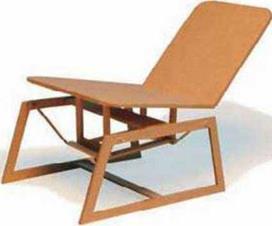
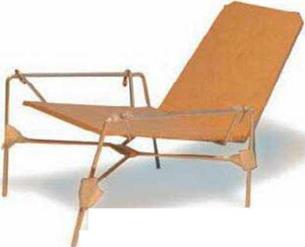
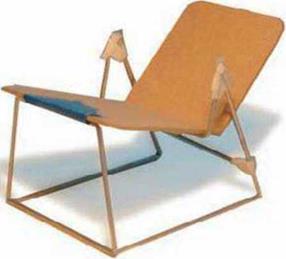 ©0 Models made of paper clips and chipboard examine different approaches to achieving the desired gliding mechanism. Credit: Christopher Deam
©0 Models made of paper clips and chipboard examine different approaches to achieving the desired gliding mechanism. Credit: Christopher Deam
Opposite top left: This rough mock-up is made of unfinished fiberglass, plywood, and steel tubing.
Credit: Christopher Deam
Opposite top right: The incline is adjusted using pieces of scrap plywood to prop up the front end of the prototype. This block of milled CNC (computer numerical controlled) MDF (medium density fiberboard) will be used to make the final mold for the fiberglass seat. Credit: Christopher Deam
(^) Opposite: The Glider is available from Lolah in either white or dark gray, with arms of white or natural, oiled walnut. Credit: Lolah

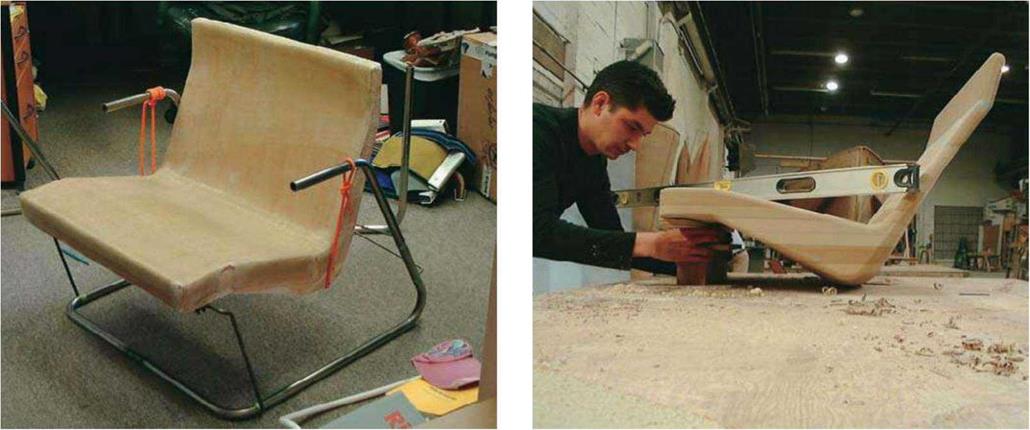
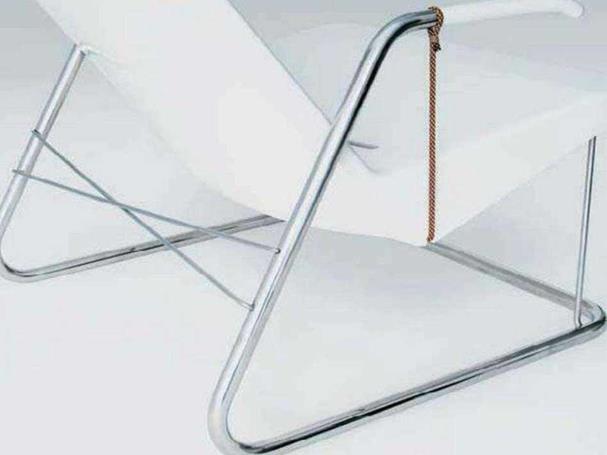
The seat is made from fiberglass, shaped in a two-part mold. “It’s what they call monocoque construction, so it’s a hollow form,” Deam points out. “Our goal was to utilize a fiberglass shell and also give comfort through posture and less through shape. It was really important to me to get the inclinations correct, the angles between the seat and the back and what angle relates to the floor. You can have a fiberglass seat, and it can still be comfortable. It was a really careful study. We did full-scale mock-ups of different inclinations to make sure we got it right.” The seat is finished with more fiberglass to hide the seams and then gets a coating of high-gloss resin. The chair is supported by legs in the front, while the back is suspended by the rope that runs in a continuous loop between the arms and through the seat. “It’s very much a handmade object,” Deam points out.
For Deam, the fact that the chair works is a straightforward result of his design process. “I approach design from a really humancentric position,” he says. “I take the user experience as the generator of pretty much everything. I’m interested in structural clarity, evidencing the way something works, and making sure that it feels essential, that nothing is extra, nothing can be taken away.” He pauses and adds, “At the same time, I try to allow for the idiosyncratic in my work. I’m not afraid of peculiar outcomes.” Laughing, he says, “And this has been called a peculiar chair. I accept that. It’s not trying to be, per se, elegant. But we ended up there. We tried to make it as elegant as we could, but it’s not the generation of the idea.”


